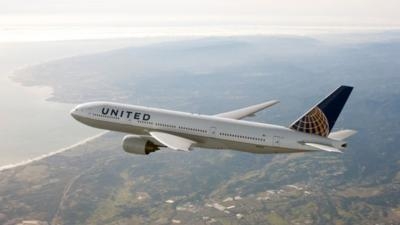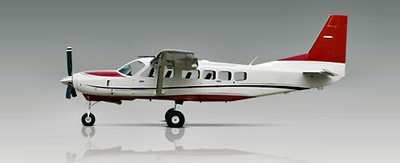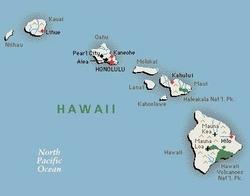Of Long Aircraft and Closely-Spaced Hold-Short Markings
On 23 January 2023 at approximately 16:11 Hawaii Standard Time (HST), a runway incursion occurred at Honolulu, Hawaii’s Daniel K. Inouye International Airport (HNL).

The incident involved a Boeing 777-200 operating under Part 121 of the Federal Aviation Regulations as United Airlines flight 384 (UAL384), and a Cessna 208B Grand Caravan operating under Part 135 of the Federal Aviation Regulations as a Kamaka Air flight 145 (KMK145). According to the National Transportation Safety Board’s (NTSB) preliminary report of the incident, UAL384 crossed HNL’s runway 04L, thereby conflicting with KMK145, which was attempting to land on subject runway. The closest proximity between the two aircraft was 1,173-feet.
No injuries resulted from the incident, and neither aircraft was damaged.
UAL384 was a regularly scheduled domestic passenger flight operating from Colorado’ Denver International Airport (DEN) to HNL. KMK145 was a domestic cargo flight from the Lihue Airport (LIH) on the island of Kauai to HNL—a flight of some 89-nautical-miles. Daytime visual meteorological conditions prevailed at the time of the incident.

According to the UAL384 flight-crew, the taxi, takeoff, departure, and cruise phases of the flight were uneventful. At the time of the incident, UAL384’s Second In Command (SIC/First Officer) was the pilot flying (PF) the 777, and the Pilot In Command (PIC/Captain) was the pilot monitoring (PM).
Approximately seventy-nautical-miles from UAL384’s planned top-of-descent point, the flight-crew commenced preparations for arrival and approach. After the two pilots obtained and reviewed the HNL Automated Terminal Information Service (ATIS) broadcast, company notes, Notices To Airmen (NOTAMs), and the germane arrival, landing, and taxi diagrams, they configured the aircraft for the expected arrival and approach. The UAL384 air-crew noted ongoing construction at HNL had rendered runway 08L unavailable for landing traffic. United Airlines company operational notes indicate Boeing 777 aircraft are not permitted to perform land and hold short operations (LAHSO) on runway 04R.
The UAL384 flight crew set forth that prior to commencing descent, they had briefed the flight’s planned approach as the RNAV (GPS) to runway 08R. Taking into consideration the unlikely possibility that HNL approach would issue a last-minute runway reassignment, the pilots retrieved the landing data for runways 08R and 04R.
UAL384’s PIC stated that after the aircraft had leveled at flight level 230, the Honolulu Control Facility (HCF) directed the 777 to proceed direct to BAMBO at 10,000 feet MSL. Shortly thereafter, UAL384 switched frequencies to the subsequent HNL approach control sector and checked in. The PIC reported the HNL ATIS had been received and understood.
HNL approach control assigned UAL384 a heading of 220-degrees and advised the flight-crew to expect a visual approach to runway 04R. The flight crew acknowledged the transmission, and the PIC again advised HNL approach that United’s operations specifications forbid LAHSO operations on HNL runway 04R.

The SIC initiated the descent and reviewed and loaded the approach to runway 04R into the 777’s flight management computer (FMC). She indicated she changed the aircraft’s landing flap setting from 25° to 30° and its autobrake setting from two to three. She then briefed the approach and reviewed the exit plan from runway 04R, confirming the aircraft would either roll the runway’s full length or, speed permitting, make a left turn onto taxiway “K.”
Information obtained by the NTSB air traffic control (ATC) group indicated that UAL384 reported on frequency with the HNL tower at approximately 16:06 HST and stated the aircraft was level at 1,500-feet MSL, four-miles from PERLY (4.5 DME Southeast/222° bearing from HNL Rwy 04’s threshold). The UAL384 flight-crew further reported they were planning to land on runway 04R. HNL tower provided UAL384 wind information and cleared the flight to land on runway 04R.
At approximately the same time, KMK145 reported it was descending to 1,500 feet in preparation for landing on runway 04L. HNL tower instructed KMK145 to continue to runway 04L and stated same-direction traffic was a heavy Boeing 777 landing on runway 04R. KMK145 acknowledged the transmission, reporting the 777 in sight. HNL tower instructed KMK145 to maintain visual separation from the Boeing 777, issued a wake turbulence warning, and cleared KMK145 to land on runway 04L. The KMK145 pilot correctly read back the instructions and clearance.
At approximately 16:08 HST, the HNL tower advised UAL384 that a Caravan was on its left, and to maintain visual separation from such. UAL384 acknowledged the transmission and requested confirmation it was cleared to land on runway 04R. HNL tower confirmed the landing clearance.
UAL384’s SIC (PF) later stated she landed the 777 on runway 04R, activated the thrust-reversers, and began manual braking at approximately 110-knots. As the 777 approached 80-knots, the flight’s PIC (PM) made the 80-knot callout, and the SIC stowed the thrust-reversers and slowed the aircraft to less-than 35-knots
At this time, UAL384’s SIC offered to transfer control of the aircraft to the PIC as briefed. The PIC took control of the 777, using the aircraft’s tiller to initiate a left turn onto taxiway “K.”
Information obtained by the NTSB’s ATC group indicated that about 16:09 HST, HNL tower inquired after whether UAL384 had “got Kilo?” UAL384 responded, “turn left on Kilo.” HNL tower instructed UAL384 to hold-short of runway 04L. UAL384 acknowledged the hold-short instruction.
UAL384’s PIC later stated he was surprised by the hold-short instruction insomuch as he had informed HNL approach control that UAL’s operations specifications forbid LAHSO operations on HNL runway 04R. The PIC reported he had momentarily lost situational awareness as the 777 exited runway 04R, as he believed HNL’s runway 04R and runway 04L were separated by a greater distance than they actually are. The PIC stated he’d been concerned about getting clear of the landing runway and focused primarily on taxiing the 777 beyond the hold-short line between runway 04R and taxiway “K.”

The PIC stated also that the distance between HNL runways 04R and 04L is insufficiently long for a 210-foot Boeing 777 to fully clear runway 04 and still hold-short of runway 04L; by the time the PIC realized UAL384 was passing the runway 04R hold-short line, a portion of the aircraft had already entered runway 08L and crossed onto runway 04L.
Realizing a runway incursion was in progress, HNL tower controllers instructed KMK145 to hold short of runway 08L, which it did. During a subsequent telephone interview, the pilot of KMK145 stated his company’s Cessna 208B flights “normally” exit the runway at taxiway “E,” which is prior to runway 08L. As KMK145 had exited at taxiway “E,” evasive action (by which to avoid UAL384) was neither taken nor required.
At approximately 16:10 HST, HNL tower instructed UAL384 to continue across runway 08L and contact ground control once clear. UAL384 complied, stating the aircraft was clear of runway 04L at taxiway “K” and bound for gate G4. HNL ground control issued instructions for UAL384 to proceed via taxiway “K,” turn left on taxiway “Z,” and proceed to gate G4.
So ends the NTSB’s preliminary report.
 ANN's Daily Aero-Linx (05.06.25)
ANN's Daily Aero-Linx (05.06.25) ANN's Daily Aero-Term (05.06.25): Ultrahigh Frequency (UHF)
ANN's Daily Aero-Term (05.06.25): Ultrahigh Frequency (UHF) ANN FAQ: Q&A 101
ANN FAQ: Q&A 101 Classic Aero-TV: Virtual Reality Painting--PPG Leverages Technology for Training
Classic Aero-TV: Virtual Reality Painting--PPG Leverages Technology for Training Airborne 05.02.25: Joby Crewed Milestone, Diamond Club, Canadian Pilot Insurance
Airborne 05.02.25: Joby Crewed Milestone, Diamond Club, Canadian Pilot Insurance






